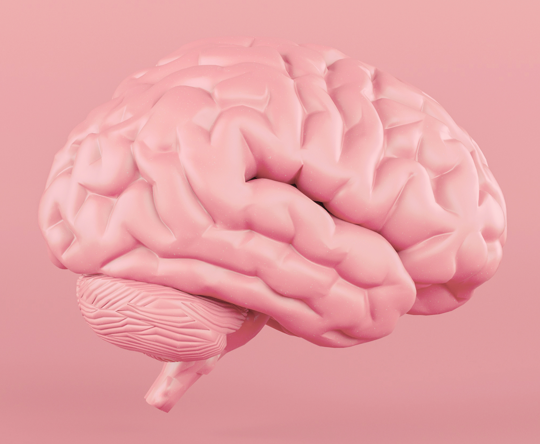Find out what the one symptom that should prompt an immediate visit to your ophthalmologist is and how to detect dry eye
The World Health Organization estimates that out of the 2.2 billion people suffering from eye diseases worldwide, for at least a billion of them the disease could have been prevented. Thanks to the eyes, it is possible to detect some other diseases because they reveal symptoms of diabetes, high blood pressure or rheumatic diseases. Apart from aging and genetic predispositions, eye health is influenced by many other factors we have control over ourselves, thus preventing disease and improving our health. This is why ophthalmologists, neurologists, endocrinologists, psychiatrists, rheumatologists, otorhinolaryngologists, plastic surgeons, general practitioners, pharmacists and engineers are brought together at X-Lab — the expert research hub by JGL — to analyse the latest research and, by applying a holistic approach, to share with us how to take care of our eye health and why that is important for our whole bodies.
Ante Barišić, MD, ophthalmologist and head of the Department of Cataracts at the Special Hospital for Ophthalmology “Svjetlost,” points out that, in addition to aging and genetics, there are many factors that influence eye health which we have control over ourselves. The majority of them are related to general health, and some are related specifically to the eyes. Regulation of blood pressure, blood sugar and fats levels is extremely important for the circulatory system. Because there are many blood vessels in the eye that supply the optic nerve and the macula with blood, any weakness of the blood vessels affects the posterior side of the retina. Ante Barišić, MD, also reveals at what age everybody should have an ophthalmological examination.
1 The World Health Organization estimates that every other case of eye disease could be prevented, so how can we work on prevention and what is the best way to take care of our eye health?
There is a large number of people in the world who have severe visual impairment or are blind. Most of them live in developing countries and can’t see because of poor and inaccessible medical care. When we talk about diseases that can lead to poor eyesight, in the first place we mean cataract, glaucoma and damage to the macula. On top of that, there are visual impairments (amblyopia) caused by unrecognized high diopters at an early age in children, optic nerve diseases, and eye trauma. More and more people suffer from diabetes in the modern developed world because of lifestyle and dietary habits, and this often leads to damage to posterior side of the retina, which, in turn, can lead to significant loss of vision and even blindness.
• Cataract
Cataract is the clouding of the natural lens in the eye that occurs with age, but can also occur in people under 50, especially in myopic people, diabetics, and even after eye trauma. Cataracts can’t be prevented, but it is important to diagnose them and operate in time to avoid possible complications, which occur most often when hard, mature cataracts are operated on. In those patients, recovery is also prolonged. The symptom of cataracts is blurred vision that develops gradually. The only treatment is surgery which lasts ten to fifteen minutes, is performed under local anaesthesia, and is painless and effective. In summary, the cataract should be operated on as soon as possible, instead of waiting for it to mature as was thought before.
• Glaucoma
Glaucoma is an eye disease in which the optic nerve is damaged. It commonly occurs with elevated intraocular pressure, but in ten percent of cases patients can have normal intraocular pressure (normotensive glaucoma). If not diagnosed and treated in time, glaucoma can lead to the deterioration of the vision field, loss of vision, and even complete blindness. Patients usually don’t have any symptoms for a long time, and when they do appear (eye pain, impaired vision), the disease has already progressed. That is why we call glaucoma the silent killer of eyesight. While the type called acute glaucoma is accompanied by severe pain and sudden loss of vision, glaucoma usually destroys vision slowly and gradually, without any symptoms. Therefore, regular ophthalmological examinations are very important, especially for people with family members who have glaucoma, because the disease has a hereditary component as well. Even though it can appear during childhood and adolescence, glaucoma most often appears after the age of 40, which is why everybody who is 40 or older should have an ophthalmological examination which includes the measuring intraocular pressure. Depending on the results of this examination and the family medical history, the doctor will determine how often a person should come for an examination.
• Eye diseases caused by diabetes
Diabetes is becoming ever more common, especially in developed countries. Diabetes damages the blood vessels in the posterior side of the retina, right in the centre for eyesight, the yellow spot or the macula, and this can lead to permanent damage. Diabetics also have a higher risk of retinal detachment and the occurrence of cataracts. Regulation of blood sugar levels is extremely important because, along with the duration of the disease, it is directly related to eye damage. With regular check-ups by an ophthalmologist and the appropriate therapy, it is possible to prevent loss of vision in diabetics. Naturally, healthy dietary habits, physical activity, and avoiding smoking and alcohol are key to regulating this disease.
• Macular degeneration (degeneration of the yellow spot)
The degeneration of the yellow spot or the macula — which is the centre of the clearest vision in the posterior side of the retina — affects more and more elderly people, but also people over the age of 60. The exact cause of the disease is not known, we know that there is a genetic predisposition and it is believed that smoking and excessive sun exposure may contribute to it, but this is not certain. Ultimately, the disease leads to loss of central vision while the periphery remains preserved. There are two forms of the disease called the dry and the wet macular degeneration. The first form, dry macular degeneration, leads to a gradual worsening of vision and doesn’t necessarily impair visual acuity significantly. It can’t be treated; vitamin complexes for the macula are recommended to try to slow its progression. The wet form of the disease leads to bleeding in the macula, a sudden drop in vision which may be preceded by distortion of straight lines — which is a symptom that requires you to see a doctor immediately — and the appearance of a fixed dark spot in the centre of the vision field. The treatment for this form of the disease must be started immediately with injections into the eye. Therapy is quite effective if started in time.
2 What symptoms should we respond to immediately?
An important symptom that should be reported to an ophthalmologist is the appearance of many little “flies”, dots, “cobwebs” and the like in the vision field, accompanied by flashes in the dark. This condition is normal, in 99% of the cases it is something that happens to everybody at least once, but in the remaining 1% percent of cases it may be a sign of retinal detachment, which must then be operated on.
Diseases that may lead to poor eyesight or blindness can be successfully treated if diagnosed in time, and this is why it is imperative to have regular ophthalmological examinations. Unfortunately, there are several diagnoses for which modern ophthalmology still has limited treating powers, such as optic nerve disease (optic neuropathy) or retinal vascular occlusion (occlusion of arteries and veins), but they can be prevented by regulating blood pressure, blood sugar and fats.
3 Apart from aging and genetic predispositions, what else affects eye health, and what can we influence ourselves?
In addition to aging and genetic conditioning, there are a number of factors that affect eye health. The majority of them are related to general health, and some are related specifically to the eyes. Regulation of blood pressure, blood sugar and fats levels is extremely important for the circulatory system. Because there are many blood vessels in the eye that supply the optic nerve and the macula with blood, any weakness of the blood vessels affects the posterior side of the retina. Diabetes is the most obvious example. Just as they can have a stroke or a heart attack, patients with vascular system problems can also get a blockage or an infarction of blood vessels in the optic nerve or the macula, or elsewhere in the eye, which can lead to significant visual impairment and sometimes even blindness.
Smoking and drinking alcohol have a great impact on the circulatory and nervous systems, and therefore on the eye as well. Physical activity is extremely important. Today, there is a lot of talk about nutrition and healthy eating habits, and it is clear that it affects the whole body. A normal, balanced diet is the necessary for good eyesight.
Some theories state that overexposure of the eye to sunlight can lead to macular damage, so it is wise to wear sunglasses, especially in the summer.
4 What should we pay attention to in children?
We know that the first two years are the period when vision develops rapidly. In the next four years, up to the age of six, this development is still fairly fast, and then slows down a little bit to the age of ten. This means that how much vision is developed by the age of ten is the quality of vision we will carry on through life. That is why it is extremely important to recognize eye diseases or potential high diopters in children in time. Should the parents notice anything unusual in the child’s eye, like the pupil being white, lazy eye, the drooping of the upper eyelid or something else, they should take the child to an ophthalmologist immediately. In addition, examinations of children at the ages of three and six are mandatory. If there is a history of eye disease in the family, check-ups are even more important. Parents may not notice that their child has poor eyesight in one eye because the other eye works normally, so congenital amblyopia is often detected too late and can no longer be helped. That is why vision examinations for children are necessary.
5 How can we recognize dry eye? What are the symptoms and causes?
Today, dry eye syndrome is becoming more common and more severe in people of various ages and occupations. I have the impression that almost every third or fourth patient who comes into my office has some disorder related to dysfunction, i.e., the weakness of the tear film.
Our tears have multiple functions in the eye. Primarily it is to protect the eye, but they also play an important role in creating an image, meaning seeing. Tears are located on the surface of the epithelium, the protective layer of the cornea, and protect it from damage. If we have a poor tear film, discomforts and disorders such as foreign-body sensation in the eye, the feeling of sand in the eye, grittiness, burning, tearing (epiphora), discomfort, redness of the eye and occasional blurred vision can appear. Symptoms occur especially during the night or in the morning and intensify towards the end of the day. The most common cause of dry eye syndrome in people actively working is the excessive use of computers. The pandemic has forced many people to work from home and spend even more time at their computers and indoors, and this has led to a significant increase in the number of patients coming in with dry eye symptoms. When we are looking at screens for a long time, but also when we are reading, driving, or watching television, we unconsciously blink less and thus reduce the secretion of tears and their smearing in the eye. If you wear contact lenses, this problem becomes even more pronounced.
People who have a hormonal disorder, especially a disorder of the thyroid gland, and menopausal women, often have dry eyes. Patients with autoimmune diseases such as all types of arthritis, systemic lupus erythematosus (SLE), Sjögren’s syndrome and the like also tend to have a more severe form of the disease that often requires additional therapy besides artificial tears. Eye surgeries temporarily damage the tear film, especially in patients who already have problems with the tear film. Some medications, such as antidepressants, increase eye dryness. People who work in an environment where the air is heated or cooled excessively or who work in closed air-conditioned systems, such as hospitals, office buildings, refrigerating rooms or professional kitchens, have considerable eye problems.
6 How do we treat dry eye?
Dry eye syndrome is treated with artificial tears that repair our tear film. Today, the gold standard is preservative-free artificial tears with increased viscosity to keep the tear film stable for longer. They can be used in pair with eye lubricating gels, especially before bed because the eyes are most dry during the night. There are also corticosteroid and cyclosporine drops and various other methods of treating dry eye, which are being developed and perfected daily due to the growing number of patients with this problem. Prevention includes educating patients about the causes of eye dryness and removing them when possible, making modifications to the work and living environment, for example by humidifying the rooms, avoiding working long hours at the computer, ventilating the rooms, and installing proper air conditioning and heating. In rare cases, dry eye can lead to serious issues with vision, while in the vast majority of cases it is only a small inconvenience and a nuisance in normal daily life.
QUIZ
SUFFERING FROM DRY EYE SYNDROME? ANSWER THESE QUESTIONS AND FIND OUT HOW TO PREVENT IT AND WHAT TO DO WHEN YOU ARE ALREADY FEELING THE SYMPTOMS
QUIZ





